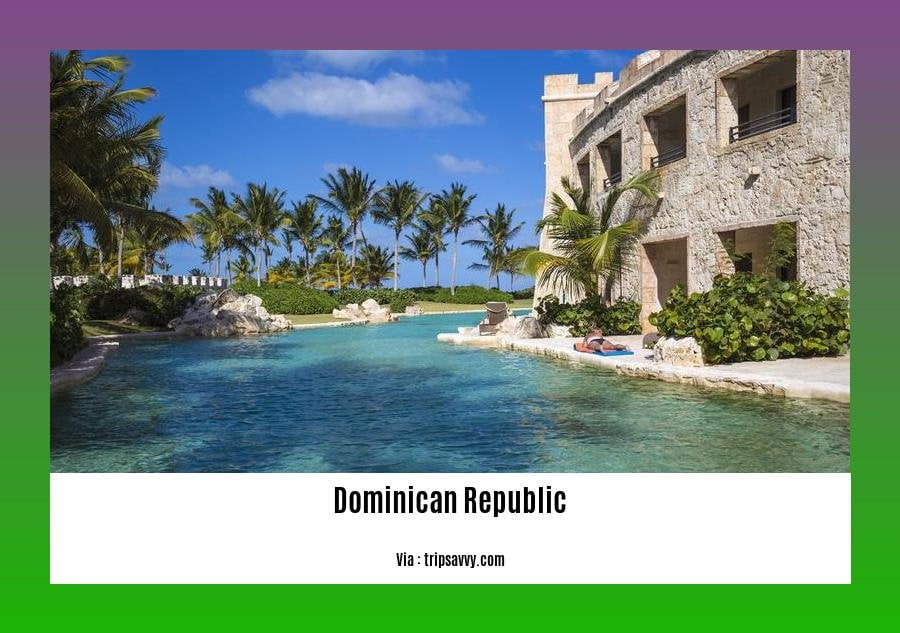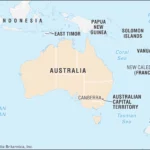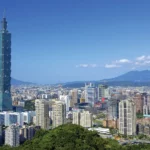Get ready to be amazed as we unveil 10 intriguing fun facts about the Dominican Republic that will ignite your wanderlust and have you booking your trip today! From the electrifying national sport of baseball to the captivating history embedded in every cobblestone street, this Caribbean gem promises an adventure like no other. Discover why coffee is the drink of choice and why Santo Domingo holds the title of the oldest capital city in the Western Hemisphere. Join us on this exhilarating journey as we dive into the heart of the Dominican Republic, uncovering its hidden treasures and infectious rhythms that will leave you spellbound.
Key Takeaways:
Baseball reigns as the national sport, birthing renowned players like Sammy Sosa, Albert Pujols, and David Ortiz.
Sip on the national drink, coffee, and savor the country’s position among the top 10 global cocoa producers.
Santo Domingo stands as the oldest capital city in the Western Hemisphere, while the Dominican Republic boasts a diverse and thriving ecosystem.
Sway to the rhythm of Merengue, the national dance, and conquer Pico Duarte, the loftiest peak in the Caribbean.
Marvel at Lake Enriquillo, the Caribbean’s deepest point, and delve into the history of Christopher Columbus, who named the country La Española.
Immerse yourself in the breathtaking Dominican countryside, where 25% of the unspoiled terrain and coastal waters are safeguarded by the government.
Discover the wonders of Parque Nacional del Este, renowned as one of the world’s most captivating national parks.
Unleash your inner baseball fan, as the Dominican Republic is a breeding ground for exceptionally talented players.
10 Fun Facts About the Dominican Republic
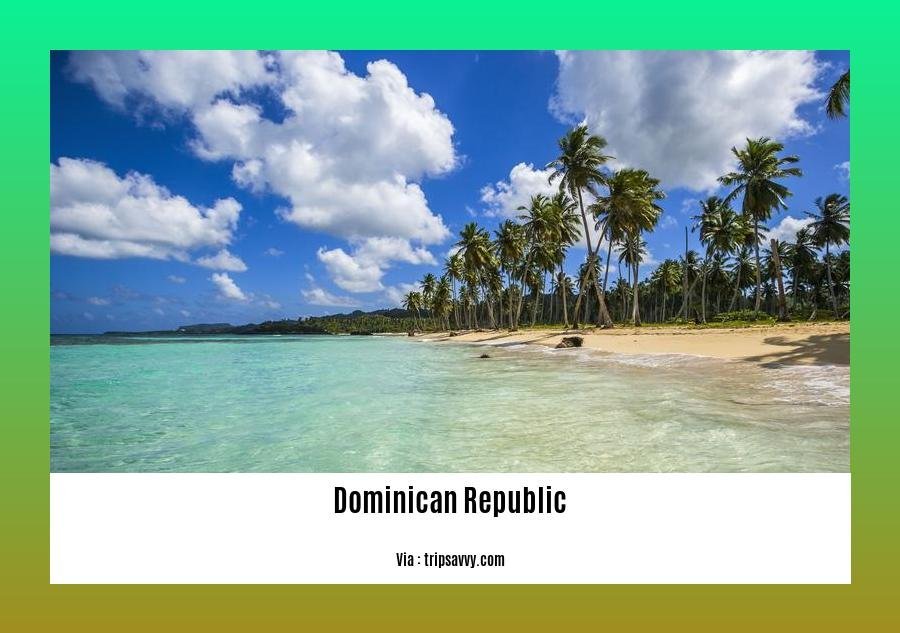
Dive into the rich tapestry of the Dominican Republic, a land brimming with vibrant culture, breathtaking landscapes, and fascinating trivia. Get ready to be amazed!
- Baseball Fever:
Baseball reigns supreme in the Dominican Republic, where it’s not just a sport but a passion. The nation has gifted the world with legendary players like Sammy Sosa, Albert Pujols, and David Ortiz, making it a true baseball powerhouse.
- Coffee Connoisseurs:
Savor the aroma of rich Dominican coffee, a beloved national beverage. The country ranks among the world’s top 10 cocoa producers, so indulge in the deliciousness of locally grown chocolate too.
- Old World Charm Meets Modern Vibes:
Step into Santo Domingo, the oldest capital city in the Western Hemisphere. This vibrant metropolis seamlessly blends colonial architecture with modern skyscrapers, offering a captivating glimpse into the past and present.
- Merengue Magic:
Let the infectious rhythms of merengue captivate your senses. This lively dance, designated as the national dance of the Dominican Republic, will have you moving and grooving to its vibrant beats.
- Nature’s Majestic Peaks and Lowlands:
Ascend to the summit of Pico Duarte, the Caribbean’s highest peak, and witness breathtaking panoramic views. Conversely, descend to Lake Enriquillo, the Caribbean’s lowest point, and explore its unique ecosystem.
- Carnival Extravaganza:
Immerse yourself in the vibrant colors and infectious energy of the Dominican Carnival, held annually in February. This exuberant celebration showcases elaborate costumes, lively parades, and the joyful spirit of the Dominican people.
- Columbus’s Legacy:
Journey back in time to when Christopher Columbus named this enchanting land La Española (Hispaniola). The Dominican Republic proudly carries this historical legacy, weaving it into its rich cultural tapestry.
- Preserving Paradise:
The Dominican Republic is a champion of conservation, dedicating 25% of its land and coastal waters to protected areas. Discover stunning national parks like Parque Nacional del Este, where pristine beaches meet lush rainforests, creating a breathtaking natural paradise.
- Baseball Legends in the Making:
Nurture your inner baseball fan with a visit to the Dominican Republic, where baseball academies produce some of the world’s most talented players. Witness the next generation of baseball stars honing their skills and preparing to conquer the Major Leagues.
- Baseball at the Heart of the Nation:
Baseball isn’t just a sport; it’s deeply embedded in the Dominican identity. The national team, known as “Los Dominicanos,” represents the country with pride and passion, showcasing their exceptional skills on the global stage.
You’ll be shocked to know that, Argentina is home to Teatro Colón, one of the world’s most renowned opera houses. Isn’t that interesting? Did you know that, Argentina holds the record for having the most number of psychologists per capita? To know more fascinating facts about Argentina, you should definitely read 3 interesting facts about Argentina.
But hang on! There’s more to Argentina than that. Did you know that, the world’s widest avenue, Avenida 9 de Julio, is located in Argentina? Hold on to your hats, there’s one more fact you won’t believe; they have the southernmost city in the world, Ushuaia, also known as the “End of the World”. Get ready to be amazed by even more incredible facts about this beautiful country by clicking 5 interesting facts about Argentina.
Ever heard of the Everglades, the subtropical wilderness in Florida? Well, we bet you didn’t know that, it is home to the smallest and the most endangered subspecies of crocodile, the American crocodile. Isn’t that mind-blowing? To uncover more intriguing facts about the Florida Everglades, make sure to read Facts about Florida Everglades, and get ready to be blown away!
3. It has An Incredibly Rich History
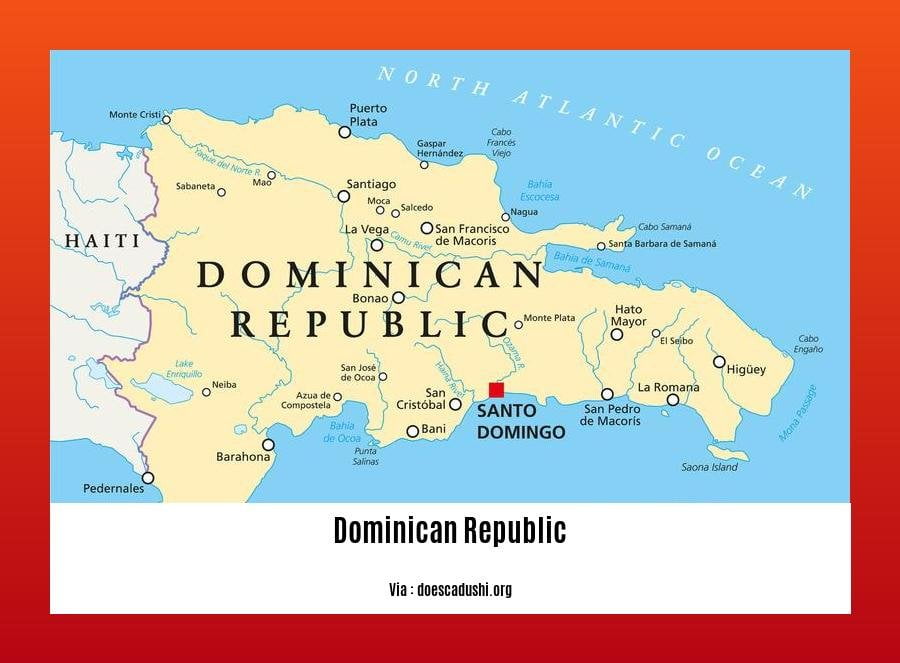
The Dominican Republic boasts a rich and captivating history, deeply intertwined with the arrival of Christopher Columbus and the subsequent colonization by European powers. Here are some remarkable highlights:
A Pioneering European Settlement: The Dominican Republic holds the distinction of being the site of the first permanent European settlement in the Americas, established by Bartholomew Columbus, Christopher’s brother, in 1496. This settlement, La Isabela, paved the way for further exploration and colonization in the region.
500 Years of History Celebrated: In 1992, the Dominican Republic marked a significant milestone, commemorating the 500th anniversary of Christopher Columbus’ arrival on the island. This historic event profoundly shaped the country’s identity and heritage.
Baseball: A National Passion: Baseball is deeply ingrained in the Dominican culture, declared the national sport in 1937. The country has produced numerous renowned baseball players, including Sammy Sosa, Albert Pujols, and David Ortiz, who have left an indelible mark on the sport worldwide.
A Thriving Agricultural Legacy: The Dominican Republic is renowned for its thriving agricultural industry, with major exports including coffee, sugar, tobacco, cocoa, and a variety of tropical fruits. These agricultural products have played a significant role in shaping the country’s economy and global recognition.
Environmental Treasures: Due to its strategic location in the Caribbean, the Dominican Republic is home to an incredibly rich and diverse ecosystem. The country has dedicated significant efforts to preserving its natural heritage, with 25% of its territory designated as protected areas, showcasing a commitment to environmental conservation.
Santo Domingo: A City of Firsts: Santo Domingo, the Dominican Republic’s capital, holds a special place in history. Founded by Christopher Columbus in 1496, it is the oldest continuously inhabited European settlement in the Americas. This vibrant city is a treasure trove of colonial architecture, cultural landmarks, and historical significance.
Key Takeaways:
The Dominican Republic played a pivotal role in the early history of European exploration and colonization in the Americas.
Baseball is deeply ingrained in the Dominican culture, with the country producing some of the most renowned players in the world.
The Dominican Republic’s agricultural industry is a major contributor to the country’s economy, with diverse exports including coffee, sugar, tobacco, cocoa, and tropical fruits.
The country is committed to preserving its rich ecosystem, with 25% of its territory designated as protected areas.
Santo Domingo, the Dominican Republic’s capital, is a city of historical significance, boasting the title of the oldest continuously inhabited European settlement in the Americas.
Sources:
12 Fascinating Facts About Dominican Republic
25 Interesting Facts About Dominican Republic Every Traveler Should Know
4. **Santo Domingo is the Oldest Capital City in the Western Hemisphere**
Santo Domingo, the Dominican Republic’s captivating capital, stands as a testament to history, culture, and architectural majesty. Founded in 1496 by Bartholomew Columbus, the brother of Christopher Columbus, Santo Domingo proudly holds the title of the oldest continuously inhabited European settlement in the Americas.
Key Takeaways:
Historic Legacy: As the oldest capital in the Western Hemisphere, Santo Domingo exudes a rich tapestry of history, blending colonial architecture with modern influences, inviting travelers to explore its storied past.
Cultural Crossroads: Santo Domingo serves as a melting pot of cultures, where indigenous Taino traditions intertwine with Spanish, African, and European influences, creating a vibrant tapestry of customs and traditions.
Architectural Marvels: The city’s colonial-era architecture is a sight to behold, featuring landmarks like the Catedral Primada de América, the first cathedral in the Americas, and the Alcázar de Colón, the former residence of Christopher Columbus’ son, Diego.
Dynamic Energy: Santo Domingo pulses with life, offering a vibrant blend of modern amenities and historic charm, from bustling markets and lively street life to world-class museums and art galleries.
Culinary Delights: Indulge in the city’s culinary scene, savoring traditional Dominican dishes like “la bandera,” a hearty meal of rice, beans, and stewed meat, or tantalize your taste buds with fresh seafood and tropical fruits.
Sources:
- Santo Domingo: The Oldest European Settlement in the Americas
- Exploring Santo Domingo: A Journey Through History and Culture
FAQ
Q1: What is the national sport of the Dominican Republic, and why is it so popular?
A1: Baseball is the Dominican Republic’s national sport, and it is incredibly popular because it is seen as a source of national pride. The country has produced several famous baseball players, such as Sammy Sosa, Albert Pujols, and David Ortiz, who have contributed to the sport’s popularity.
Q2: What is the national drink of the Dominican Republic, and how is it typically consumed?
A2: Coffee is the Dominican Republic’s national drink, and it is typically consumed in a strong and bitter form. It is often served with milk or sugar and is a popular morning beverage.
Q3: What are some highlights of the Dominican Republic’s rich history?
A3: The Dominican Republic has a rich history that includes being the first permanent European settlement in the Americas and the site of the first Catholic archbishopric in the Americas. It has also been the target of pirates, taken over by the French, and renamed by a dictator.
Q4: What makes Santo Domingo, the Dominican Republic’s capital city, so significant?
A4: Santo Domingo is the oldest capital city in the Western Hemisphere and is known as the “Cradle of Civilization of the New World” due to its grid pattern that became a reference for future city developments. It contains the oldest institutions in the western hemisphere, such as the Santo Mary of the Incarnation Cathedral, and is a UNESCO World Heritage Site.
Q5: How is the Dominican Republic preserving its natural beauty and biodiversity?
A5: The Dominican Republic has safeguarded 25% of its unspoiled terrain and coastal waters to protect its rich biodiversity. This includes establishing national parks, such as the Parque Nacional del Este, which is considered one of the most beautiful national parks in the world.
- China II Review: Delicious Food & Speedy Service - April 17, 2025
- Understand Virginia’s Flag: History & Debate - April 17, 2025
- Explore Long Island’s Map: Unique Regions & Insights - April 17, 2025
